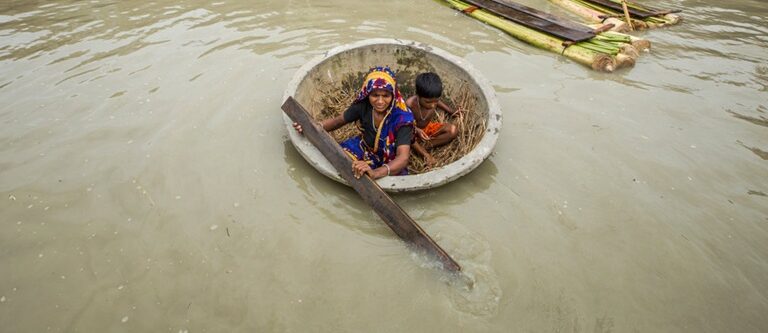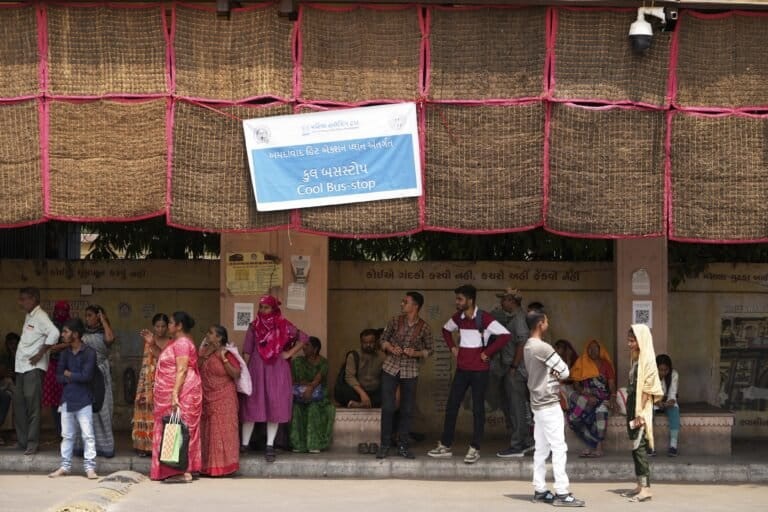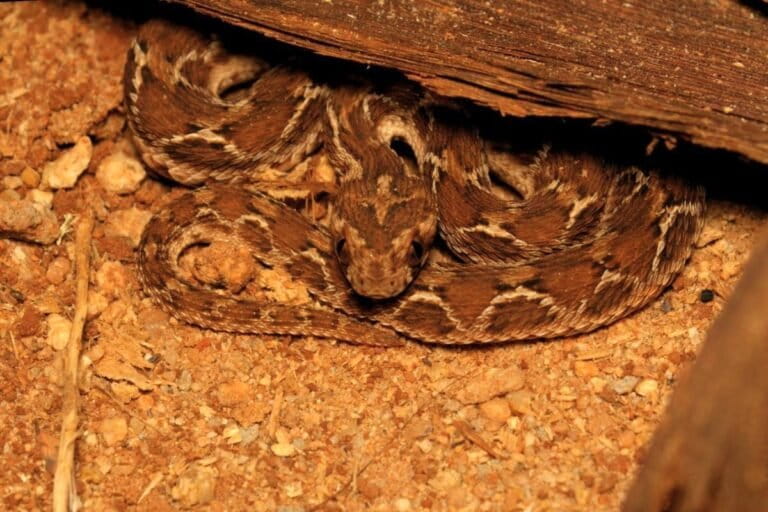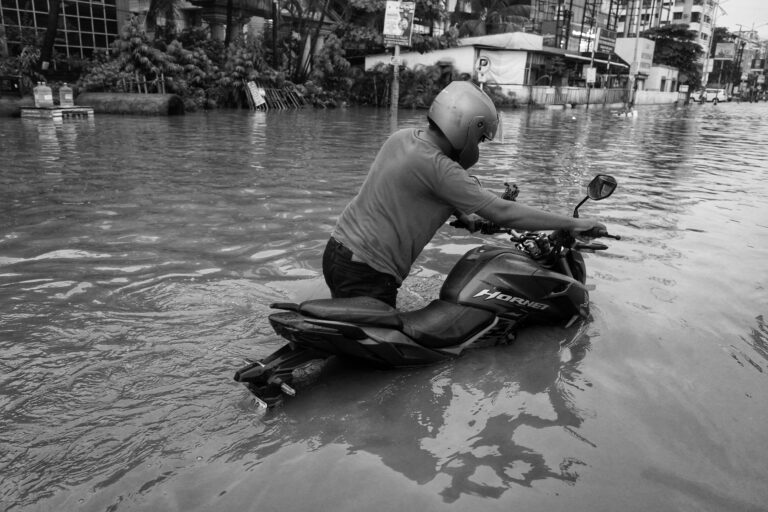- A few initiatives that promote experience-based tourism, where tourists get to experience the lifestyles of the indigenous communities and their low carbon-footprint living, are becoming popular in Maharashtra.
- The Mangrove Foundation under the Maharashtra Forest Department has also encouraged such initiatives. Mangrove safaris that boost livelihoods are the main attraction of government initiatives.
- Experts say that such ecotourism can promote sustainable rural development if a market for ecotourism is created along with the capacity building initiatives supported by the government.
The Konkan region, along India’s west coast, has been a tourist attraction for several years now. Nestled between the Western Ghats and the Arabian Sea, this region has beaches, waterfalls, temples, forts, mangroves, seafood and more, all of which offer tourists the opportunity to experience this region’s diverse ecosystems.
A few initiatives modelled around experience-based ecotourism, which highlight the lifestyles and culture of the indigenous communities of the region, are becoming popular.
Konkani Ranmanus, a community-based sustainable ecotourism agency, collaborates with local initiatives in villages along the coast and in the hills. “The biggest flaw of commercial tourism is that local people are forced to upgrade their lifestyles to offer urban amenities to tourists. This results in loss of livelihoods and erasure of indigenous culture and sustainable practices,” shared Prasad Gawade, the founder of Konkani Ranmanus.
“In Konkan, we have unique foods such as kokum butter, ragi roti, and fish curry using ingredients that are endemic to this region. But local delicacies with ingredients procured from your own land have no value in conventional tourism,” he shared. Konkani Ranmanus operates on one cardinal principle: for tourism to be sustainable, the lifestyle of the local people must be the unique selling point. This means that tourists must be willing to live and eat like the local people, connect with nature by walking with the farmers and fishermen and, at times, even help out in the fields.

- Guests preparing jackfruit for a meal. Photo by Konkani Ranmanus.
“Travel, food, and housing are all sustainable in our model. Most travel is done on foot; our tourists eat locally grown food, and live in earthen homestays in the villages,” shares Gawade. Tourists are discouraged from bringing their vehicles, and any plastic they bring must travel back to the city with them. For Konkani Ranmanus, the tourist footfall is around 50 per season – in a year they have 140-150 visitors (including visitors who volunteer).
The Velas Turtle Festival, which started in 2007 with the aim of conserving olive ridley turtles, has evolved into a successful ecotourism model that raises funds for conservation. During the first year of the festival, Sahyadri Nisarg Mitra, an NGO that led the turtle conservation efforts in Velas, said that they expected 50 guests, but more than 150 guests showed up.
“The homes of the local communities did not have room for all the guests, so they had to sleep in the yards. After seeing the turtles the next day, however, all the complaints about sleeping arrangements turned into the joy of interacting with the turtles,” shared Vishwas Katdare of Sahyadri Nisarg Mitra. Velas receives 4,000–6,000 tourists per year spread out across two months. The Velas Turtle Festival can accommodate 300 tourists at a time in their homestays.
The local communities in Velas, under Katdare’s mentorship, decided against starting hotels and resorts in the village and now offer homestays to the tourists.
Read more: Transforming a ghost village with hill-centric livelihood and tourism opportunities
Gurudas Nulkar, head of Symbiosis Centre for Climate Change and Sustainability, who studied the Velas model and compared it to the conventional tourism model in Murud, says that the remarkable aspect of the Velas model is the lack of competition among the homestays. Both are popular tourist destinations with populations of less than ten thousand, and both have no industries. Murud’s tourism is not regulated by any organisation, while Velas has formed a voluntary organisation that regulates ecotourism activities. The study notes that these villages have several similarities on paper, but they differ greatly in terms of environmental resource use and cultural changes.
“For an ecotourism model to be sustainable and community-based, all forms of capital — social, human, and natural — must be locally sourced. Unless everyone charges the same amount, homestays are inclined to upgrade their facilities and provide more and more facilities to tourists, which is not a sustainable model,” he shared.
Ecotourism is promoted not just by individual entrepreneurs in Konkan but also by the Mangrove and Marine Biodiversity Conservation Foundation of Maharashtra (Mangrove Foundation), an autonomous body under Maharashtra’s forest department. In nine villages of Raigad, Ratnagiri, and Sindhudurg districts, the Mangrove Foundation boosts livelihoods and diverts tourists from conventional tourism to mangrove tourism, creating awareness about the importance of mangroves in the process.
“We promote bicycles, row boats instead of engine boats, and kayaking wherever possible,” shared Vandan Jhaveri, Assistant Director (Ecotourism), Mangrove Foundation. “We train the selected villages in the importance of ecotourism. The residents of the villages are usually aware of the importance of mangrove species but do not know their scientific names. As the number of tourists who want to experience ecotourism increases, our initiatives will start drawing higher revenues,” he added.

- A cave naturally carved in a searock in Konkan. Photo by Konkani Ranmanus.
Sushegaad: the low carbon lifestyle
With Konkani Ranmanus, tourists get the “sushegaad” experience. A concept in Konkani culture, it loosely translates to “being content with nature’s bounty, and finding luxury in the simple life”.
“Our culture is steeped in sustainable practices. We limit the number of people who visit at a time so that they can revel in varied Konkani experiences: eating crabs and fish, tender bamboo shoots, wild mushrooms. We cannot handle groups larger than 12 people because we would have to exploit resources to serve local delicacies,” shared Gawade, the founder.
Gawade’s policy reflects one of the recommendations of Ya-Yen Sun of the University of Queensland who studied the carbon footprint of tourism in 2018. “A ‘de-growth’ strategy to curb global tourism emissions through finding a sustainable visitor quota and maintaining it over time is critical,” she shared in an email interview with Mongabay-India.
Read more: As tourism grows in Leh, so does the concern about its environmental impact
Gawade shared that the Konkani lifestyle incorporates sustainability and prevents the exploitation of resources. “The idea of the sushegaad life does not involve the accumulation of wealth and resources, or a 24X7 active lifestyle, which typically involves overconsumption of resources. In this region, farming is less arduous and not expansionist. The land is hilly and densely forested, so wetland farming and subsistence farming on the available land are commonly practised,” he shared. A traditional community-based fishing practice called “raapan fishing” is practised in this region. “A group of 20-50 village residents scours the water close to the beach in a wooden boat. We don’t venture very deep into the sea to protect the smaller fish. This ensures that we do not overfish,” he added.
Kalinje Ecotourism, one of the Mangrove Foundation-backed initiatives, offers mangrove safaris and homestays where tourists get to experience the local lifestyle of the people. Local delicacies such as fried oyster and crab, bhakris (flatbread usually made of millets), amboli (rice and lentil pancakes) are served with local water, buttermilk, or solkadhi (a kokum-based beverage). “We offer urban residents experiences that they do not have access to in cities, such as living in our tiled roof homes. But this is our beginning. Once we grow, we want to start a homestay with a few urban facilities so that people who cannot do without these comforts can also stay with us,” shared Kavita Todankar, one of the guides who leads the ecotourism group.

- A sacred tree in Kudase village of Dodamarg district. Photo by Konkani Ranmanus.
Ecotourism creates awareness about conservation
Songaon Ecotourism, also supported by the Mangrove Foundation, offers homestay and crocodile safaris along Vashishti river. Visitors can call ahead to book crocodile safaris; timings vary day to day, as the visibility of the crocodiles depends on the tides.
Rajaram Govind Divekar, a fisherman from Songaon who coordinates the safaris, says that the initiative has increased awareness about the importance of these mangroves.
“We have a wide coastline with dense mangrove forests, which protect our village against coastal erosion and mitigate the impact of floods,” Divekar shares.
Kranti Minde, Project Associate with the Mangrove Foundation, says that the success of Songaon Ecotourism assured the local people that ecosystem services could boost the economy, which inspired the entire village to contribute to the success of the initiative. “The entire village is now helping the ecotourism committee because they are convinced that ecotourism can bring in more money into the village and boost livelihoods,” she shared.
Pravin Desai, who owns a homestay near Dodamarg, had decided to take to cashew farming on his 10-acre land, when he met wildlife experts who convinced him of the potential of a homestay with wildlife trails. He then started Vanoshi Forest Homestay, close to Tilari and Talkat forests, after receiving training with the experts on the biodiversity in the vicinity.
“The homestay took off at home, to a great response. Photographers, researchers, and other nature lovers enjoy the trails. This pushed me to build another cottage next to my house. We constructed it on my land and have been receiving bookings ever since the lockdown ended last year,” he shared.

- (From left) Ghavane chutney, a popular local delicacy; mangoes being dried in the sun to be used later in the year; local produce drying on the roof of one homestay; tender bamboo shoots locally known as komche. Photos by Konkani Ranmanus.
Balu Parab, a farmer who owns Mangar Farmstay, a Ranmanus ecotourism centre, says that he had never considered foraying into tourism before Ranmanus’ Gawade convinced him to turn his 150-year-old outhouse into a homestay.
“Our guests are interested in livelihood-based learning and learning more about the endemic species in this area,” Parab shared.
Konkani homes typically have a mangar — a Konkani word for outhouse where goods or utilities are stored — which can be equipped with basic facilities for guests. The mangar model has several advantages. Farmers get to share their lifestyle and educate travellers in essential farming-related life skills, while also finding a better paying market for their produce by selling to tourists.
“The tourists who come through Konkani Ranmanus come with the objective of being close to nature. I take them on jungle trails and show them wild edibles and trees from my farm. We warn them that the room does not have urban comforts such as televisions or air conditioners, but all feedback has been positive so far,” shared Parab.

- Konkani Ranmanus guests learn the process of making shirvale (rice noodles) and coconut rus (coconut juice). Photo by Konkani Ranmanus.
“Responsible, community-based tourism promotes sustainable rural development”
The Ministry of Environment, Forest and Climate Change (MOEFCC) released guidelines in 2021 to support “low impact nature tourism” within protected areas and ecotourism zones around forests. Experts say that these guidelines, while being a step in the right direction, need to be revised to make them implementable. With specific guidelines and policies, ecotourism can serve as a means to sustainable rural development if operationalised through gram sabhas, gram panchayats, and urban development authorities.
“Successful ecotourism models where natural resources are not exploited typically involve research feedback from the scientific community. Research inputs about the carrying capacity of the area, wellbeing of biodiversity, impacts of tourism on fragile landscapes, and designing experiences for ecotourism are all essential to develop successful sustainable ecotourism models,” shared Aparna Watve, ecologist and member of Maharashtra State Biodiversity Board.
Tourism research in India is still in an infancy stage, shared Megha Budruk, Associate Professor, School of Community Resources & Development (CRD) at Arizona State University. Data-based decision-making can boost tourism responsibly. “Beyond economics, research about the social and ecological impacts of tourism such as, carrying capacities or wants and hopes of local communities, can help shape responsible tourism policy,” she shared.

- Konkani Ranmanus guests volunteering in the monsoon paddy field. Photo by Konkani Ranmanus.
“A market for ecotourism must be created”
Capacity building for ecotourism is only one side of the coin, but simultaneously a market for ecotourism and awareness about responsible, sustainable ecotourism must be created, say the experts. “Governments must support ecotourism initiatives by investing in ecotourism and also creating awareness about conservation of local resources and heritage. We need an institutionalisation of the work of the Mangrove Foundation. Standalone activities are not enough to conserve the landscape of Maharashtra,” shared Gurudas Nulkar.
Budruk of Arizona State University suggested that targeted marketing based on data on why people travel, known as ‘push and pull motivations’ be collected. “A baseline on the awareness of tourists is needed to create educational programmes for tourists. Given the increasing influence of social media, its impact on tourism should be explored,” she shared.
“India must invest in the tourism sector so that local policies align with the national goals to reduce carbon emissions,” shared Soumen Rej, Ph.D. candidate at Vinod Gupta School of Management, Indian Institute of Technology, Kharagpur who studied the role of environmentally friendly tourism in decarbonization.
Since the return on investment for energy-saving initiatives remains low, businesses have limited incentive to lower emissions, said Ya-Yen Sun of the University of Queensland.
Responsible ecotourism can contribute to the mitigation of carbon emissions when combined with careful carbon editing and assessment over time, she shared. “To mitigate tourism emissions, it is necessary to develop tourism from both demand and supply perspectives. Serving domestic travellers will keep the travel-related emissions to the minimum,” she added.
Banner image: Mangrove safari in Achara village in Sindhudurg district where tourists are shown 21 mangrove species. Photo by Konkani Ranmanus.














